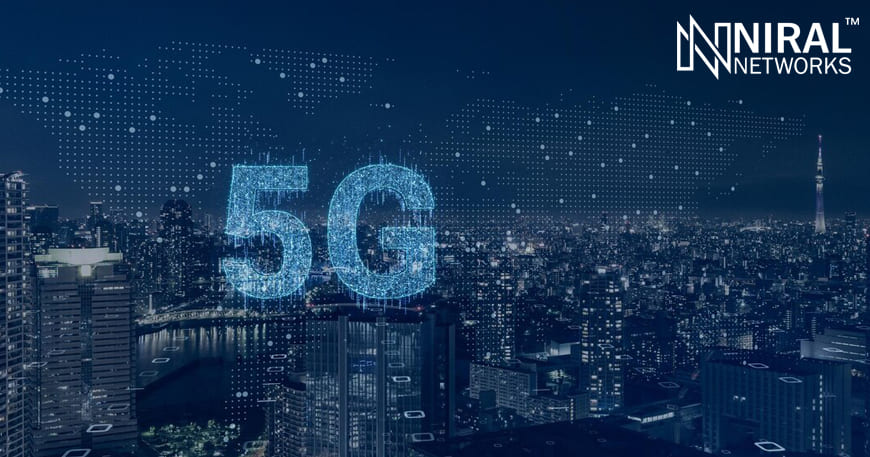5G is the revolutionary successor to 4G mobile network technology, promising a significant leap in speed, capacity, and flexibility. It’s not just about downloading movies faster; 5G paves the way for a future filled with innovative applications that will transform how we live and work. Let’s delve deeper into the key features of 5G architecture:
1. More Frequencies: A Wider Highway for Data
Imagine a highway with more lanes. That’s essentially what 5G achieves by utilizing a broader range of radio frequencies compared to 4G. These frequencies are categorized into two main groups:
- Lower Frequencies (Sub-6 GHz): These frequencies provide good coverage, especially for rural areas, and can penetrate buildings better. However, they offer slightly slower data speeds compared to higher frequencies.
- Higher Frequencies (Millimeter Wave): These frequencies offer blazing-fast data speeds, perfect for densely populated areas with high bandwidth demands. However, they have a shorter range and struggle to penetrate buildings.
By utilizing both low and high frequencies, 5G networks can strike a balance between speed, coverage, and capacity. It’s like having multiple highways catering to different needs – one for long-distance travel with fewer lanes (low frequencies) and another for high-speed traffic with more lanes (high frequencies).
Read Also: 5G Core Network Architecture – A Beginner’s Guide to Next-Generation Connectivity
2. Smarter Networks: Thinking Ahead of Your Needs
Unlike 4G networks, which primarily focus on connecting devices, 5G networks are designed to be “intelligent.” This means they can:
- Direct traffic more efficiently: 5G networks can analyze network traffic in real-time and route data packets along the most efficient paths. This helps to reduce congestion and ensures smooth data flow, even during peak usage periods.
- Customize for different needs: 5G networks can be sliced into virtual networks, each tailored to specific applications. For example, one slice could prioritize low latency (minimal delay) for real-time gaming, while another could prioritize high bandwidth for downloading large files. This flexibility allows 5G networks to cater to a wider range of user demands.
Think of it like a smart traffic management system that adjusts traffic flow based on real-time conditions and prioritizes emergency vehicles. Similarly, 5G networks anticipate and prioritize data traffic based on the specific needs of the user and application.
3. Virtualized Networks: Adapting on the Fly
Gone are the days of bulky, dedicated hardware for every network function. 5G embraces Network Function Virtualization (NFV). Here’s how it works:
- Software-defined functions: Traditional network functions like firewalls and load balancers are now virtualized, running as software programs on standard servers. This makes the network more flexible and scalable.
- Faster deployment and updates: With software-defined functions, changes and upgrades can be done quickly and remotely, eliminating the need for physical hardware modifications. Imagine updating your phone’s operating system – that’s the kind of agility NFV brings to 5G networks.
Think of it like building a network with software Lego blocks instead of fixed bricks. These software blocks can be easily rearranged or replaced, allowing the network to adapt to changing demands and new technologies.
These core features of 5G architecture – wider range of frequencies, intelligent traffic management, and software-defined networks – work together to create a powerful and adaptable mobile network infrastructure.
This paves the way for exciting new applications like:
- Ultra-fast downloads and uploads
- Real-time gaming with minimal lag
- Enhanced virtual reality experiences
- Revolutionized smart cities and connected cars
- Improved healthcare with remote monitoring and surgery
- The Internet of Things (IoT) with billions of connected devices
5G is not just about faster internet; it’s about unlocking a future filled with possibilities. With its intelligent design and adaptability, 5G is poised to become the backbone of a truly connected world.





